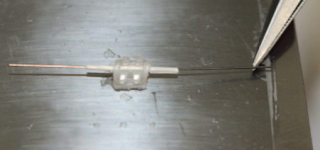Marlos Loiola - In 2000 you published a Classical study at the Angle Orthodontist held in conjunction with Professor Lysle E. Johnston. In that it evaluated the aesthetic impact in the profile of patients treated with and without extractions. After 18 years of publishing has anything changed? What are the care you take to make the decision to extract or not to extract in orthodontic cases?
Prof. Jay Bowman - I was so fortunate to have been taught by Lysle Johnston, collaborate with him on research and writing, have him as a mentor, and finally to consider him a good friend. I credit him for his encourage, guidance, and stimulus to “think” about orthodontics. The article you noted was the result of research that I needed to gain membership into the Eastern Component of the Edward H. Angle Society of Orthodontists. I was very honored to have won the Angle Research Award from the Angle Orthodontist for this paper.
At that point in time, some general dentists were claiming that extractions were routinely destroying patient profiles and jaw joints. The same methods were applied to samples of Causians, African-Americans, Mexicans, and Koreas with similar results: namely, extractions and some reduction in lip protrusion benefitted patients that needed it (those with initial crowding and protrusion [the keys to the extraction decision]).
Once these overwhelming conclusions were published, critics moved on like mutating viruses with ideas that special type of self-ligating braces would permit the avoidance of extractions, no need for expanders, and would yield “different,” “better,” “fast” and “more esthetic” results. So far, there’s been no promised proof of bone-growing (unless you want to risk expanding teeth in the alveolus), no different, faster, or better results, and when light is shown on smiles—silly buccal corridors disappear.
Marlos Loiola - Currently some professionals have been performing orthodontic treatment with the use of vibratory stimuli. In 2016 you published an article in JCO reporting the treatment of patients with the use of these features in the biomechanics of distal molars. His conclusions at the time were reserved regarding the adoption of the protocol. And now in 2018 something has changed?

Prof. Jay Bowman - Once again, I was looking for a clinical research project for the requirements of Angle membership. I thought that with the large sample of molar distalization patients that I had been following since 1996 (800+), that it would be interesting to determine if something simple and non-invasive like the application of vibration might make a difference in the rate of molar movement. The unique aspect of my study is that I was determined to measure patient compliance in applying the vibration on a daily basis. Other studies that have shown no differences are suspect because they either did not measure cooperation or the patients were not compliant. My conclusions are that it appears there is an effect on the rate of distal molar movement and leveling of the lower dental arch with braces; however, absolute cooperation is likely required to see it. The most important issue is one of the time value of money or the money value of time: is the effect worth the cost?
Marlos Loiola - It is noticed that the aesthetic aligners are becoming more and more popular, with increasingly elaborate applications. How do you see those features that eliminate in some situations the use of centenarians Brackets? And would the use of this resource safely be restricted to the Orthodontic Specialist?
Prof. Jay Bowman - The concept of clear aligners is based on Harold Kesling’s use of a series of tooth positioners from 1945. I was trained by Peter Kesling, so when Invisalign was introduced in 1999, I was certainly interested in trying to make the system work; a process that has been frustrating and the Mother of Invention. Aligners are unpredictable—currently, an evidence-based conclusion. My intent has been to find ways to make it more predictable, result in the creation of adjunctive approaches, the Aligner Chewies, and Hu-Friedy’s Clear Collection of instruments.
Would it be nice to have only orthodontic specialists providing orthodontic treatment? Certainly, however, in today’s environment, that is no longer going to happen. That should not stop the specialist from striving to produce the very best results in the most professional and ethical manner possible.
Marlos Loiola - As for the new technologies, how has the American Orthodontist been implementing tomographic images, digital models, intraoral scans and 3D printing (prototyping) in the clinical routine?
Prof. Jay Bowman - Technology has certainly advanced since the days of the standard edgewise banded appliance. I experienced a taste of the end of that golden age and the lessons learned are sadly lost on the next generation. There is so much incredibly useful information in our history that goes ignored in our rush to the “next new thing.”
Has the introduction of pre-adjusted appliances, direct bonding, superelastic alloys, self-ligation, lingual braces, clear aligners, and miniscrews improved our treatment results? Perhaps. Has diagnosis improved using CBCT, digital scans, digital models, and 3D printing? Maybe. Can excellent orthodontic treatment be produced without the majority of this technology? Probably, yes.
Link of Sites the Professor Dr Jay Bowman:

































